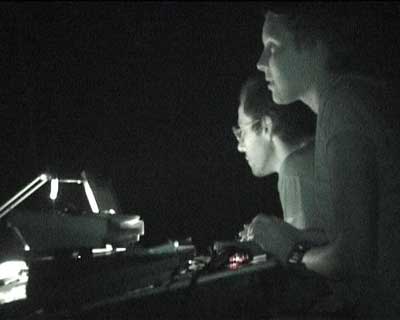Site Copyright © 2001-2005
Small Black Box
Artists
Lalila

Lalila is Katherine Gadd and Etienne Deleflie.
Lalila is Real-time sound sculpture in a video-manipulated space
Lalila combine sound and image in live performance to create evolving, immersive pieces that are drawn from common surroundings.
Details and movements of the natural landscape are analysed and connected to sound - therefore the image creating its own digital soundtrack.
Lalila are performing a set of works created whilst on Solar Circuit: a wilderness residency earlier this year located on Maria Island off the coast of Tasmania. This set of works (and talks) is currently being toured aorund most Australian capital cities.
About our software
The technical side of Lalila's work plays an extremely important part in our creative process. The ability to develop our own tools means that there is a very direct path between idea and realisation. We have spent over a year developing the software and, measured in time and dollars, I feel, is an indication of our commitment to our work.
Essentially, our software enables us to process audio and video data in the one data pool. Video streams are analysed in real time and used to affect audio streams (and vice versa).
The software is an extension of IRCAM's jMAX software (IRCAM is Institut de Recherche et Coordination Acoustique/Musique, in Paris, France). jMAX belongs to the object patcher paradigm and shares the same roots as Cycling74's MAX and Miller Puckette's PD. It was released as Open Source software around two years ago and our development began shortly afterwards.
Our contributions involve introducing the ability to process video data streams (as well as audio) in real time. This is the "technical cornerstone" of our art, in that it enables us to introduce a perceptual blurring between moving image and sound. Whilst being somewhat similar to NATO, our software is more focused on the meaningful
analysis of video data, and the affectation of audio streams using that analysis. As such the software is perhaps better compared to David Rokeby's softVNS2.
As stated above, the software is Open Source. It is free software, readily downloadable over the Internet. Lalila believes not only in contributing to the Open Source movement, but also in sharing their experience in using this software.
Website: http://www.lalila.net
